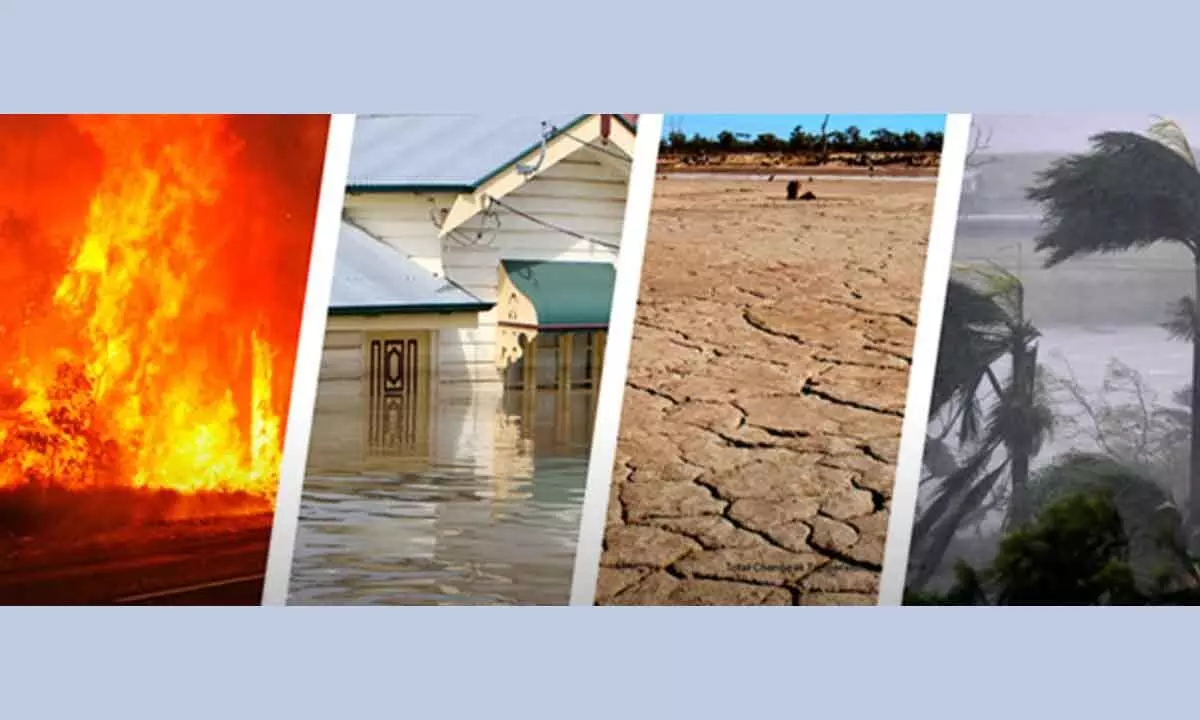Extreme events are now new normal

The year 2022 will be remembered across the US for its devastating flooding and storms – and also for its extreme heat waves and droughts, including one so severe it briefly shut down traffic on the Mississippi River.
The year 2022 will be remembered across the US for its devastating flooding and storms – and also for its extreme heat waves and droughts, including one so severe it briefly shut down traffic on the Mississippi River. During a period of five weeks over the summer, five 1,000-year rainfall events occurred in St. Louis, eastern Kentucky, southern Illinois, California's Death Valley and Dallas, causing devastating and sometimes deadly flash floods. Severe flooding in Mississippi knocked out Jackson's troubled water supply for weeks. In the fall, hurricanes Ian and Fiona deluged Florida and Puerto Rico with over 2 feet of rain in areas and deadly, destructive storm surge. Ian became one of the most expensive hurricanes in US history.
The United States was hardly alone in its climate disasters. In Pakistan, record monsoon rains inundated more than one-third of the country, killing over 1,500 people. In India and China, prolonged heat waves and droughts dried up rivers, disrupted power grids and threatened food security for billions of people. Widespread flooding and mudslides brought on by torrential rains also killed hundreds of people in South Africa, Brazil and Nigeria.
In Europe, heat waves set record temperatures in Britain and other parts of the continent, leading to severe droughts, lowriver flows that slowed shipping, and wildfires in many parts of the continent. Much of East Africa is still in the grips of a multiyear drought – the worst in over 40 years, according to the United Nations – leaving millions of people vulnerable to food shortages and starvation. This isn't just a freak year: Such extreme events are occurring with increasing frequency and intensity. Climate change is intensifying these disasters.
The most recent global climate assessment from the United Nations Intergovernmental Panel on Climate Change found significant increases in both the frequency and intensity of extreme temperature and precipitation events, leading to more droughts and floods. Extreme flooding and droughts are also getting deadlier and more expensive, despite an improving capacity to manage climate risks, a study published in 2022 found. Part of the reason is that today's extreme events, enhanced by climate change, often exceed communities' management capabilities. Extreme events, by definition, occur rarely. A 100-year flood has a 1% chance of happening in any given year. So when such events occur with increasing frequency and intensity, they are a clear indication of a changing climate state.
Climate models showed these risks were coming. Much of this is well understood and consistently reproduced by climate models. As the climate warms, a shift in temperature distribution leads to more extremes. For example, globally, a 1 degree Celsius increase in annual average temperature is associated with a 1.2 C to 1.9 C (2.1 Fahrenheit to 3.4 F) increase in the annual maximum temperature. In addition, global warming leads to changes in how the atmosphere and ocean move. The temperature difference between the equator and the poles is the driving force for global wind.
As the polar regions warm at much higher rates than the equator, the reduced temperature difference causes a weakening of global winds and leads to a more meandering jet stream. Some of these changes can create conditions such as persistent high-pressure systems and atmospheric blocking that bring more intense heat waves. The heat domes over the Southern Plains and South in June and in the West in September were both examples.
Higher temperatures increase the atmosphere's capacity to hold moisture at a rate of about 7% per degree Celsius. This increased humidity leads to heavier rainfall events. In addition, storm systems are fuelled by latent heat – the large amount of energy released when water vapour condenses to liquid water. Increased moisture content in the atmosphere also enhances latent heat in storm systems, increasing their intensity. Extreme heavy or persistent rainfall leads to increased flooding and landslides, with devastating social and economic consequences. Even though it's difficult to link specific extreme events directly to climate change, when these supposedly rare events occur with greater frequency in a warming world, it is hard to ignore the changing state of our climate.
The new abnormal
This year might provide a glimpse of our near future, as these extreme climate events become more frequent. To say this is the "new normal," though, is misleading. It suggests that we have reached a new stable state, and that is far from the truth. Without serious effort to curb greenhouse gas emissions, this trend toward more extreme events will continue.
(Writer is Professor of Geology
and Environmental Geosciences,
University of Dayton, US)














